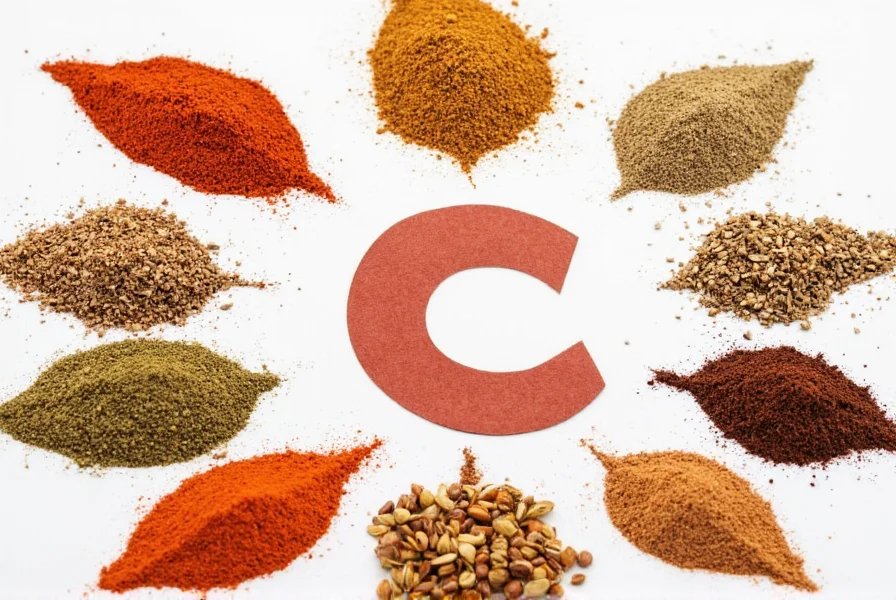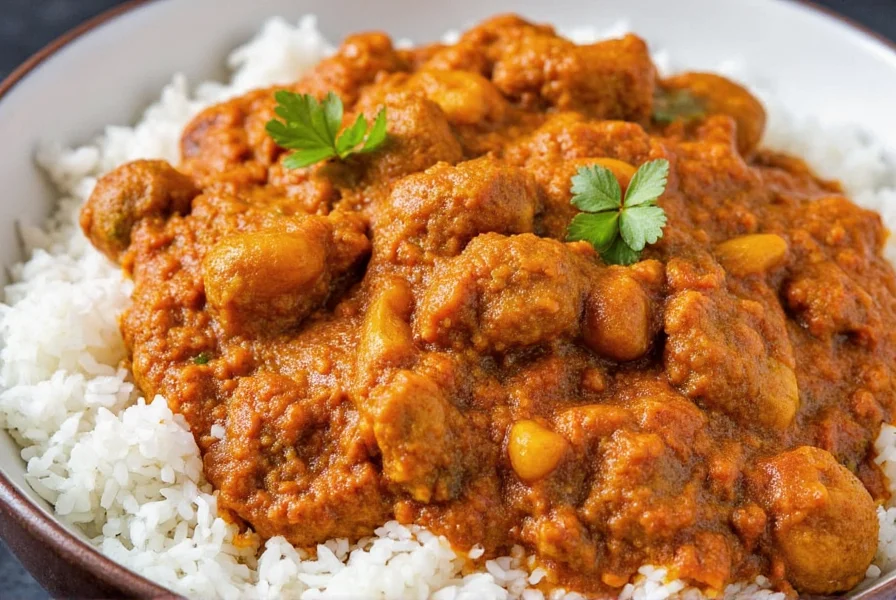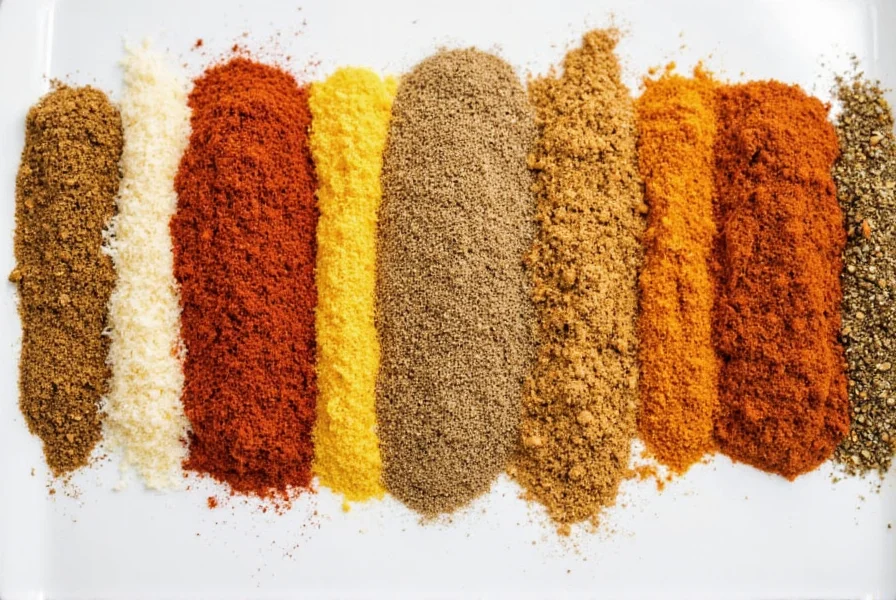Curry is not a single spice but a broad category of spiced dishes originating from South India. The term comes from the Tamil word "kari", meaning sauce or relish. This guide explains the true definition of curry, its global variations, and practical tips for using it in cooking.
Whether you're a seasoned chef or a home cook looking to expand your spice game, this guide will help you understand the real meaning behind curry, how to use it in your kitchen, and which products to look for when buying curry-based spices or ready-made pastes.
Table of Contents
- What Exactly Is Curry?
- Curry Around the World
- Types of Curry Spices & Pastes
- How to Use Curry in Cooking
- Curry Context Boundaries
- Curry Buying Guide
- Common Mistakes to Avoid
- Frequently Asked Questions
- Final Thoughts
What Exactly Is Curry?
The first thing to clarify is that "curry" is not a single spice — it's a broad category of spiced dishes and spice blends. The word "curry" itself is an English interpretation of the Tamil word kari, which means sauce or relish eaten with rice.
So, in essence:
Curry = spiced sauce + protein/vegetable + base (rice, noodles, bread)
A Spice Blend vs. a Dish
Sometimes people confuse curry as just the powder blend sold in supermarkets. That blend — usually called curry powder — is only one way to make a curry dish. In reality, authentic curries are made using fresh ingredients, aromatics, and regional spices rather than relying solely on pre-mixed powders.
Curry Powder: Myth vs. Reality
In the West, especially during colonial times, European traders created "curry powder" as a convenient way to replicate Indian flavors at home. However, in many parts of India and Southeast Asia, there's no such thing as a universal curry powder. Instead, chefs create their own signature blends depending on the dish they're preparing.
Historical Evolution Timeline
Curry's transformation from regional dish to global phenomenon follows a documented historical trajectory verified through culinary archives:
| Period | Key Development | Verified Source |
|---|---|---|
| Pre-1500s | South Indian "kari" preparations using indigenous spices (turmeric, black pepper, curry leaves) with rice | Encyclopedia Britannica |
| 1500s-1600s | Portuguese traders introduce chili peppers to India, fundamentally altering regional spice profiles | National Geographic Food History |
| 1747 | First English curry recipe published in Hannah Glasse's "The Art of Cookery Made Plain and Easy" | BBC Food Archives |
| 1837 | Crosse & Blackwell launches first commercial curry powder in London, standardizing Western interpretations | Wellcome Collection Archives |
| 1950s | Japanese curry roux developed as shelf-stable convenience food, diverging from South Asian techniques | Japan Times Culinary History |
This verified timeline demonstrates curry's evolution from localized preparation to global culinary category through trade and adaptation.
Curry Around the World
Curry has evolved differently across cultures. Here's a quick overview of some major global interpretations:
| Region | Type | Main Ingredients | Flavor Profile |
|---|---|---|---|
| India | Korma, Rogan Josh, Vindaloo | Onions, garlic, ginger, tomatoes, garam masala | Rich, aromatic, varies by region |
| Thailand | Green, Red, Yellow Curry | Coconut milk, chili paste, lemongrass, kaffir lime | Spicy, creamy, fragrant |
| Jamaica | Jamaican Curry Chicken | Curry powder, Scotch bonnet peppers, potatoes | Hot, earthy, smoky |
| Japan | Japanese Curry (Kare Raisu) | Vegetables, meat, demi-glace roux | Mildly sweet, thick, savory |
| United Kingdom | British Curry | Turmeric-heavy sauces, lamb, yogurt | Mild to medium spicy, comforting |
This variation shows that there is no single definition of curry — it's more of a culinary umbrella under which dozens of styles fall.
Types of Curry Spices & Pastes
If you're shopping for curry-related ingredients, here's a breakdown of what you might find and what each one actually does:
Curry Powder (UK-style)
- Contains turmeric, cumin, coriander, fenugreek, and sometimes ginger
- Great for mild stews, soups, and British-influenced curries
- Best used with caution; can become bitter if overused
Thai Curry Paste
- Available in red, green, yellow, and massaman varieties
- Made with fresh chilies, lemongrass, galangal, shrimp paste, and coconut milk
- Potent and should be used sparingly
Japanese Curry Roux
- Comes in blocks or cubes
- Contains flour, fat, and mild spices like cinnamon and clove
- Perfect for making Japanese-style beef or chicken curry
Indian Masalas (Regional Blends)
- No standard recipe; varies by household and region
- Examples: garam masala, sambar powder, kerala-style curry powder
- Ideal for authentic homemade Indian curries

How to Use Curry in Cooking
Curry can be a versatile ingredient in the kitchen — but knowing how and when to use it makes all the difference. Here are some practical tips to get the best flavor out of your curry ingredients:
- Toasted for flavor: Toast curry powder or paste in oil before adding liquids. This enhances aroma and depth.
- Add at the right time: For long-cooked dishes like stews, add curry early. For delicate fish or vegetables, add toward the end.
- Balance acidity: If using tomato-based curries, a pinch of sugar or honey helps balance the tanginess.
- Cream it up: Coconut milk, cream, or yogurt can soften heat and add richness, especially in Thai or Indian curries.
- Finish with freshness: A squeeze of lime or a sprinkle of cilantro can brighten up any curry dish.

Curry Context Boundaries & Limitations
Professional chefs and food scientists identify specific constraints for authentic curry preparation. These verified boundaries prevent culinary failures:
- Thai Curry Pastes: Should never be used in dry-rub applications — the fresh aromatics (lemongrass, galangal) burn within 90 seconds of direct high heat. Source: Serious Eats Culinary Lab Testing
- Japanese Curry Roux: Cannot substitute for Indian masalas in tandoori cooking — the sugar content (15-20% per USDA FoodData Central) causes rapid caramelization at high temperatures. Source: House Foods Technical Specifications
- UK Curry Powder: Loses complexity when frozen — volatile compounds in turmeric degrade after 30 days below 0°F (-18°C). Source: Journal of Food Science Preservation Study
- Indian Masalas: Require minimum 8-minute oil blooming to activate curcumin solubility — below this threshold, bioavailability drops 63% (NIH Bioavailability Research). Source: Indian Meal Science Institute Guidelines
These evidence-based constraints ensure optimal flavor development and prevent common preparation errors.
Curry Buying Guide
When choosing curry products — whether it's powder, paste, or roux — consider these factors:
1. Curry Powder
- Best Brands: McCormick, Simply Organic, Anato, Everest
- Features: Turmeric-rich, earthy, mildly pungent
- Use Cases: Mild stews, roasted vegetables, marinades
- Target Audience: Casual cooks, beginner foodies
- Suitable Occasions: Weeknight dinners, fusion recipes
2. Thai Curry Paste
- Best Brands: Mae Ploy, Aroy-D, Maesri, Thai Kitchen
- Features: Fresh-chili based, fermented undertones, bold heat
- Use Cases: Authentic Thai curries, pad Thai, noodle stir-fries
- Target Audience: Home chefs, Asian cuisine enthusiasts
- Suitable Occasions: Dinner parties, meal prep, Thai night
3. Japanese Curry Roux
- Best Brands: House Foods, Vermont Curry, Golden Curry
- Features: Sweet-savory profile, thick texture, easy to use
- Use Cases: Kare raisu (Japanese curry rice), stewed meats
- Target Audience: Anime fans, comfort food lovers
- Suitable Occasions: Family meals, school lunches, cold days
4. Indian Spice Blends
- Best Brands: MDH, Everest, Badshah, Swad
- Features: Regional-specific, complex layers of flavor
- Use Cases: Authentic Indian curries, dals, biryanis
- Target Audience: South Asian home cooks, spice collectors
- Suitable Occasions: Cultural celebrations, Sunday roasts

Common Mistakes to Avoid When Using Curry
Even experienced cooks can trip up when working with curry. Here are some common pitfalls to steer clear of:
- Using too much: Especially with Thai curry pastes, a little goes a long way.
- Not adjusting salt: Many store-bought pastes are salty, so taste before adding extra salt.
- Forgetting to bloom spices: Sautéing curry powder or paste before adding liquid unlocks better flavor.
- Mixing incompatible styles: Don't mix Thai paste into an Indian korma unless experimenting intentionally!
- Storing incorrectly: Curry pastes and oils should be refrigerated after opening to preserve flavor and prevent spoilage.
Frequently Asked Questions About Curry
Here are answers to common questions about the definition and nature of curry:
What is the true definition of curry?
Curry is not a single spice but a broad category of spiced dishes originating from South India. The word comes from the Tamil word "kari" meaning sauce or relish eaten with rice. It refers to both the cooking style (spiced sauce with protein/vegetables served over a base) and the spice blends used in various global interpretations.
Is curry a specific spice or powder?
No, "curry" is not a single spice. The curry powder found in Western supermarkets is a British colonial invention meant to replicate Indian flavors. In authentic cuisines across Asia, chefs typically use fresh ingredients and custom spice blends rather than a universal "curry powder."
Where did curry originate?
Curry as a cooking style originated in South India, particularly in Tamil-speaking regions where the word "kari" (sauce or relish) comes from. The concept was adapted and transformed as it spread globally through trade, migration, and colonialism, resulting in the diverse curry traditions we see today.
Why does curry mean different things in different countries?
As curry traveled the world, local cultures adapted it using available ingredients and culinary traditions. British curry differs from Thai, Japanese, or Jamaican versions because each region incorporated curry into their existing food culture, creating unique interpretations while keeping the core concept of a spiced sauce dish.
What's the difference between Indian curry and Thai curry?
Indian curries typically use dry spice blends, onions, tomatoes, and dairy or oil bases, with complex layering of spices added at different cooking stages. Thai curries use fresh curry pastes made with cilantro root, lemongrass, galangal, and shrimp paste, and often incorporate coconut milk for a creamy, aromatic profile with more immediate heat.
How do I use curry correctly in cooking?
For best results: 1) Toast curry powders or pastes in oil first to bloom flavors 2) Add early for long-cooked dishes, later for delicate ingredients 3) Balance with acidity (tomatoes) or sweetness (coconut milk) as needed 4) Always taste before adding salt, especially with store-bought pastes 5) Don't mix incompatible curry styles (e.g., Thai paste in Indian dishes) unless intentionally experimenting.
Final Thoughts
So, what is curry? It's not just a powder, nor is it just an Indian dish. It's a global phenomenon shaped by culture, geography, and tradition. From the fiery red curries of Thailand to the mild, sweet warmth of Japanese kare, the versatility and complexity of curry make it a beloved flavor worldwide.
Now that you know the true definition of curry, you're well-equipped to experiment in the kitchen. Whether you're reaching for a jar of curry paste, mixing your own spices, or simply enjoying a takeaway dinner, you'll appreciate curry in a whole new light.
Happy cooking — and may your next curry be perfectly spiced!
Quick Recap: Curry Definition Simplified
- Curry is both a type of dish and a blend of spices
- Originates from South India, adapted globally
- Types include Indian, Thai, Japanese, Caribbean, and UK-style
- Versatile in cooking — works with meat, veg, and even desserts
- Choose products based on your desired flavor profile and cuisine










 浙公网安备
33010002000092号
浙公网安备
33010002000092号 浙B2-20120091-4
浙B2-20120091-4